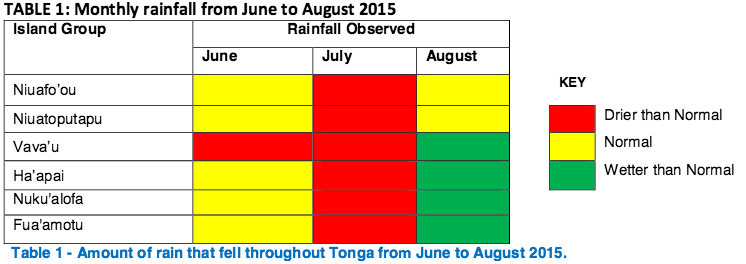Summer rainfall in Tonga is expected to be severely diminished with only half the expected monthly rainfall in some places, Tonga's Meteorological director warned today, after assessing the latest El Niño forecasts.
The current situation is that Niuafo’ou recorded the highest maximum day time temperature of 30.0°C on 1 August and the lowest night time minimum temperature was 12.0°C on 17 August in Fua’amotu, Tongatapu.
Rainfall received across the country during August was normal over the Niuas and wetter than normal throughout Tonga.

Rainfall in the last three months of June-August was below normal in the Niuas and Vava’u, normal in Ha’apai and Fua’amotu and above normal in Nuku’alofa.
Meanwhile, from August 8-12 rainfall eased the dry conditions experienced as more than 100mm rainfall received in 24-hours in Tongatapu, Ha’apai and Vava’u.
However, rainfall foreast for the next three to six months continues to favour drier than normal conditions for Tonga. Communities are advised to collect as much water as possible because this pattern of three month outlook is typical El Niño years.
The islands with rainfall deficiencies are likely to intensify in the current dry season from May-October, while below normal rainfall are favoured into the wet season, November-April.
The Meteorological Office will be issuing El Niño updates every two-weeks from now to get the message across, said 'Ofa.

Cooler nights
For Tonga, El Nino usually brings cooler night time temperatures from May to October, less rainfall and more cyclones than usual.
El Nino years are excellent for growing sweet potatoes (provided enough water is given) and crops that depend on cooler night time temperatures but it not good for rain dependent crops in the summer time.
Fruit trees and vanilla also tend to do well during El Nino due to stress induce flowering while tuna fisheries on the other hand tends to be poor due to tuna stocks migrating away from Tonga waters.



